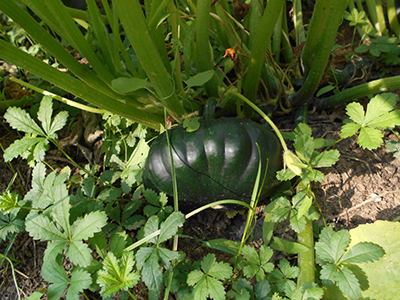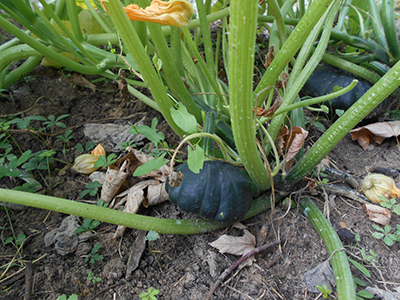Cucurbita pepo L. ssp. pepo cv. patissonina (Cucurbitaceae)




| ENG | Patisson (pattypan squash) |
| SK | patizón |
| CZ | patizon |
| PL | |
| HU | patisszon |
Using
Pattypan squash has many disease-fighting elements. Its fiber content helps reduce the risk of colon cancer and reduce dietary cholesterol. The vitamin C found in pattypan squash can also help prevent oxidation of cholesterol in the blood vessels, which in turn can decrease risk for atherosclerosis. Pattypan squash's potassium and magnesium content work to lower blood pressure. Magnesium also reduces the risk for heart attack and stroke.
| I. | II. | III. | IV. | V. | VI. | VII. | VIII. | IX. | X. | XI. | XII. | |||||||||||||
| Sowing | ||||||||||||||||||||||||
| Harvest | ||||||||||||||||||||||||
Botanical description and occurrence:
Pattypan squash is a rapidly growing half-shrubby plant. It prefers organic, well-drained, sandy soils for best growth. After about 35-45 days of plantation, yellow flowers appears which soon develop into attractive, flattened, disc like fruit pods with scallop shell like undulating edges. Pattypan squash comes in white, yellow and deep green colors. Usually, young, tender fruits picked at their early stages for best quality and preferred in cooking. After optimal harvest date, pattypan squash soon enlarges in size, its outer peel becomes tougher and seeds turn harder and inedible. It is better to use protective gloves and knife while harvesting to avoid contacting with prickly stem and leaves.
From pattypan squash assortment, it is possible to successfully grown many interesting cultivars in Slovak Republic, e. g. Gagat, Greendisc F1 (green fruits), Sunny Delight (yellow fruits) or Snowdisc F1.
Why to have the plant in your garden:
Pattypan squash can be used by several ways in kitchen. Apart from its fruits with different colour (white, green, yellow), pattypan flowers, similarly as flowers of other summer squashes, are one of the most sought after items and can make a great side-dish. Male blossoms generally picked up and female flowers left for growing into fruits.
Text:
Dr. Miroslav Šlosár, SUA, Nitra, Slovak Republic
Photo:
Dr. Ivana Mezeyová, Dr. Ján Mezey, SUA, Nitra, Slovak Republic

